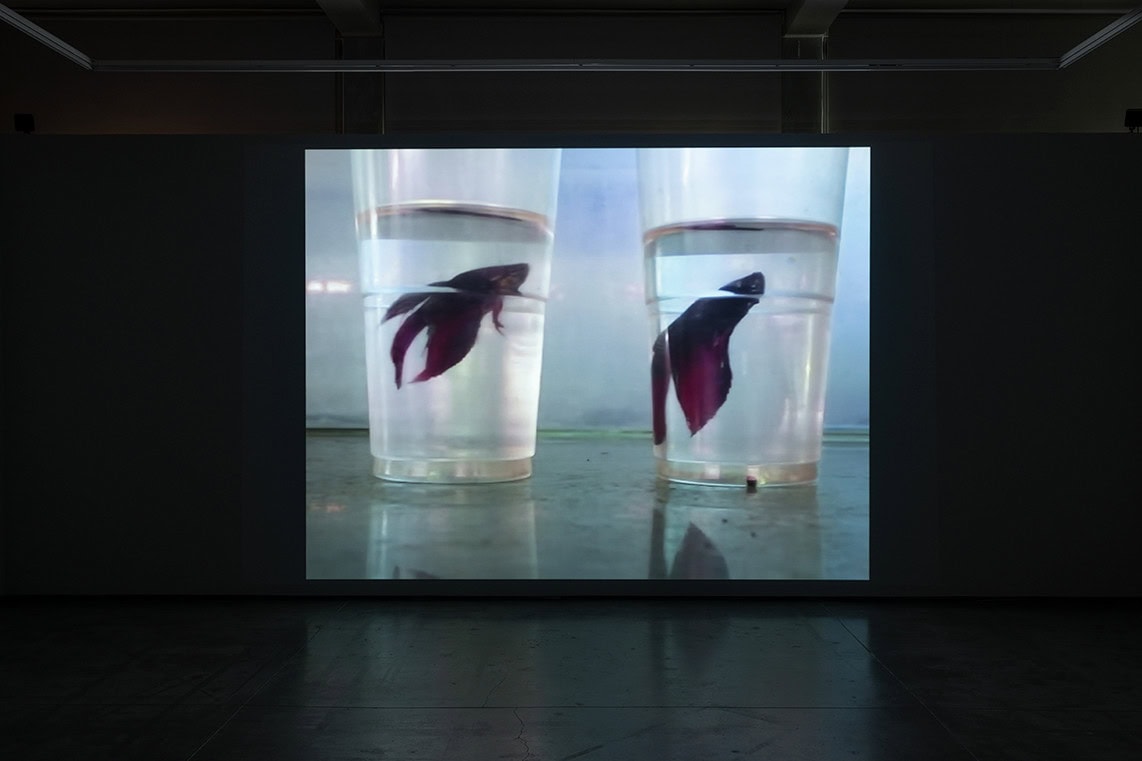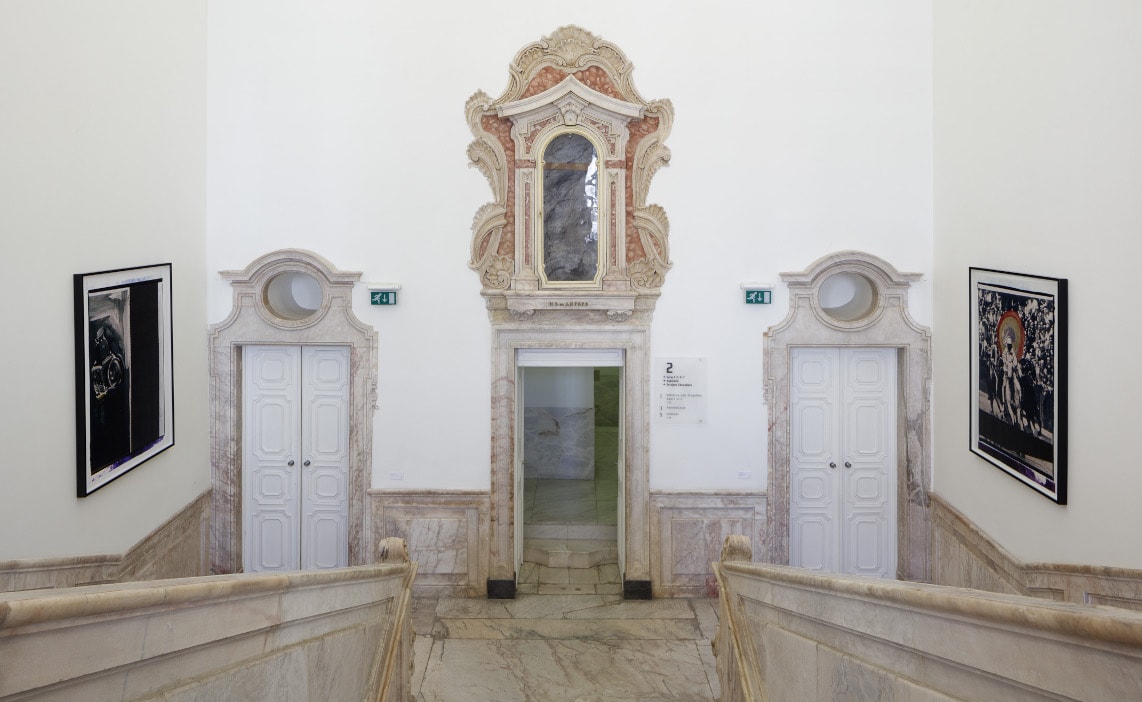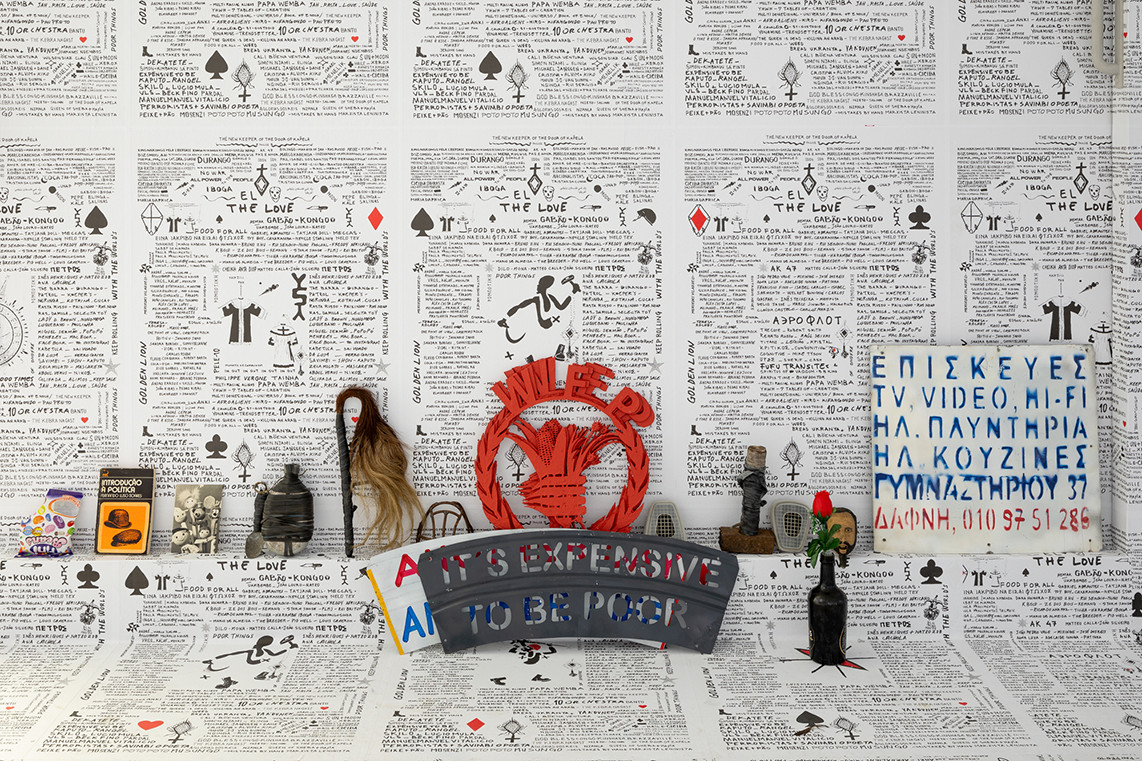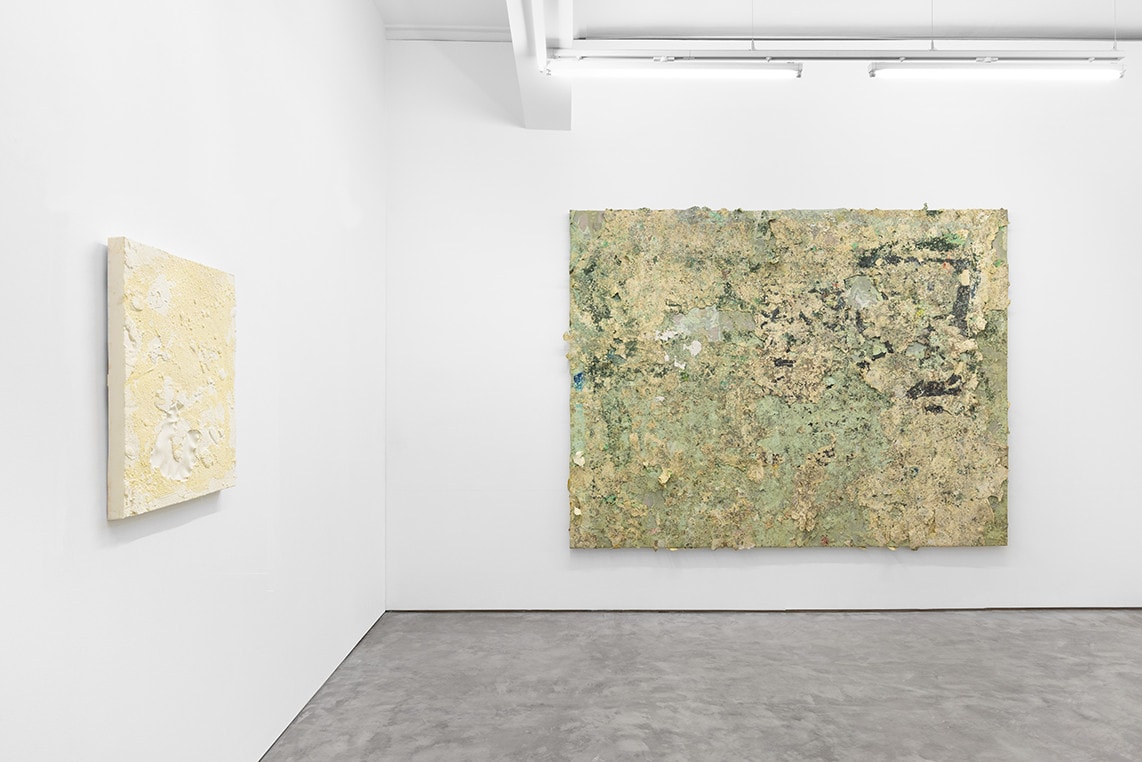Yonamine was born in Angola in 1975, the same year that the country became independent from the Portuguese colonial power – resulting in a Civil War that lasted several decades. A child of apparent freedom, his work is the outcome of a strongly political meditation on the many experiences of daily life in this post-colonial territory. He ponders this lived history-memory, which is both common-collective and individual-personal, through irony, sarcasm, humour and biting criticism, engaging in an almost archaeological process to fight the idea of obliterating a past-present imposed by the momentum of power relations. Anarchically combining, accumulating and overlapping apparently different elements, he devises his own distinctive vocabulary which – through iconographic reclaiming, the written word, and diversified techniques and media – draws on pop and urban culture by handling countless references to bring the visual experience of the urban peripheries into the exhibition venue – legitimising them as an existence.
As is usual in his artistic work, one must understand the issues shaping Yonamine’s work in each of his exhibition projects to grasp the full scope of his discourse – and this exhibition at Lisbon’s Cristina Guerra Gallery is no exception. In i, Yonamine is paying tribute to Paulo Kapela, re-imagining and, in a sense, recycling – as Kapela’s own practice put it – the exhibition projects he presented in Latvia and Lithuania, co-curated by Alicia Knock (who wrote the text covering the exhibition).
Mestre Kapela (1940-2020) – as he was known – had been an artistic and spiritual role model and inspiration for a whole new generation of Angolan artists, including Yonamine. Having been trained in the style of Poto-Poto school in Brazzaville, Republic of Congo, he had a very personal universe, resulting from his way of producing, combining disparate and to some extent conflicting objects to create new contexts. This universe reached its peak in the artist’s studio at the National Union of Plastic Artists (UNAP) headquarters in Luanda. He gathered elements from different origins and temporalities (religious, profane, political and spiritual, either objects, images or the written word) in the same space-time, recycling traces of society to create new meanings and senses as a form of empowerment and resistance – in an attempt to reconcile European and African cultures through historical re-contextualisation and the restructuring of a fractured society. A syncretic and intrinsically political endeavour that viewed life and art as inseparable: Kapela artistically inhabited places. For many, his studio was a place of worship, and his way of being and making art turned into a religion: Kapelism.
Yonamine, in his fifth solo show at the gallery, proves to be a faithful believer in the same religion that has always inspired him, honouring its principles as a way of seeing his practice reborn – a body that gives rise to a new body. He has created a universe that fulfils and rehearses community life and the relationships that come from it – often characterised by commercial exchanges, social sharing and an ever-present (spi)rituality – an act of solidarity that unites, belongs and therefore allows us to resist. These community and solidarity experiences and relationships are apparent from the accumulation of metallic elements that comprise a large part of the works in the gallery’s first room, assuming particular importance in pieces such as Chibuco, made up of different metal signs for commercial ads taken from Zimbabwe streets. These are given a deeper meaning through the way they were acquired and brought together: Yonamine delved into the system of social relations in this territory, understood its commercial and economic traits, discovered its language – based on exchange and mutual sharing – and, with this, built a community around his work, which saw Chibuku beer as a meeting point. In an almost ethnographic perspective, he worked in and with the territory to understand how his community moved and interacted, crystallising the memory of those he came across in the video that forms part of the piece CUTTER. Kapela’s work – focussed on text and writing – is reinterpreted in trade names and telephone numbers: a fragmented identity, but one of solidarity and unity.
This idea of community becomes even more important if we reflect on the way in which throughout Yonamine’s career he has given voice to non-represented identities: are they the numerous silenced speakers that punctuate the pieces, waiting for a connection to make them heard? Or are they the herd that merely responds, solo or in chorus, to the stimulation of the keys? We can’t be sure, but we can imagine. They will also surely be part of the artistic and referential universe that covers, in posters, the gallery’s pillars as a built temple – the artistic community as the support of something greater, common. A collective sense as a process in ongoing construction, with multiple timescales that offer us an open and anachronistic reading of a future time.
And while Kapela’s spirit echoes through Yonamine’s works in this first part of the exhibition, a second moment will see it truly come to fruition. In the gallery’s last room, the artist has created a shrine dedicated to Kapela. An almost cenotaph-like installation featuring a range of elements that recall the aforementioned visually noisy atmosphere of the Master’s studio, in a space entirely lined with the same posters that blanket the pillars in the gallery’s previous room. This is where a series of panels – which are hidden in the room’s walls – are filled with sacred, spiritual, profane and social references, more or less recent, using cut-outs, collages and the written word in an ironic and satirical way that serves both criticism and celebration. Along the same lines, in the centre and at some ends of the room, a set of different objects is brought face to face and opens the way to different readings and interpretations – with economic relations, spirituality and poverty being one of the “dishes of the day”. A dung beetle – the same Sísifo represented in a video at the entrance to the gallery – is displayed on the memorial’s walls, not only as a political act – of someone challenging power through art – but also as an existentialist act that brings to mind the infinite endeavour that is so often doomed to failure, but which nevertheless remains unfulfilled: in the hope of fertilising a greater common good.
More than honouring Kapela, this exhibition reflects Yonamine’s position on life and art – which are inseparable – in a permanent critical reflection on cultural and social relations, extending beyond the rescue of individuality: it celebrates the power and resilience of the collective to build a common memory – in a conscious act of artistic, political and social citizenship. Although this is an intimate process of reconciliation, rebirth and self-discovery, it only has room in the common sense of the community that Yonamine here creates, brings together, represents, sustains and is supported by – Kapelism as a mode of collective resistance.
ETC – Extraction / Trade / Cashtration, by Yonamine, at Galeria Cristina Guerra until May 4, 2024.
![Infantário Revolucionário [Revolutionary Kindergarten]](https://umbigo.s3.us-east-1.amazonaws.com/public/wp/cred_renato-cruz-santos_cee_infantario-revolucionario_4965_edit.jpg)




